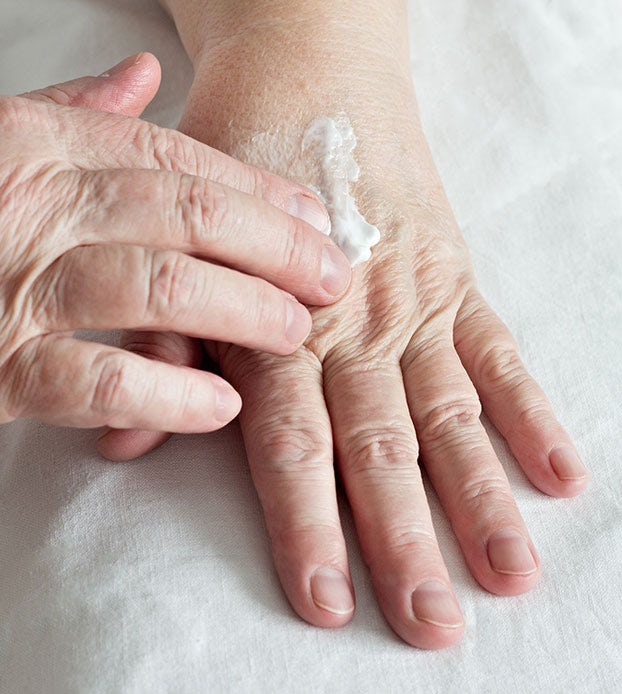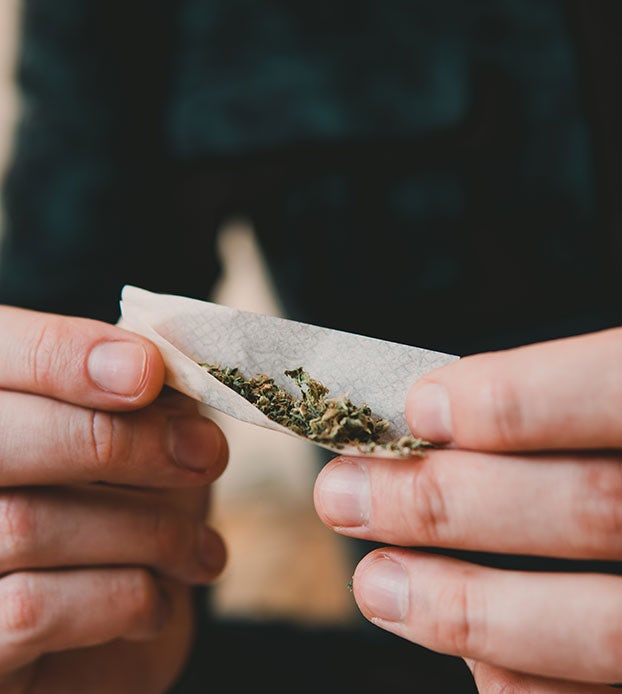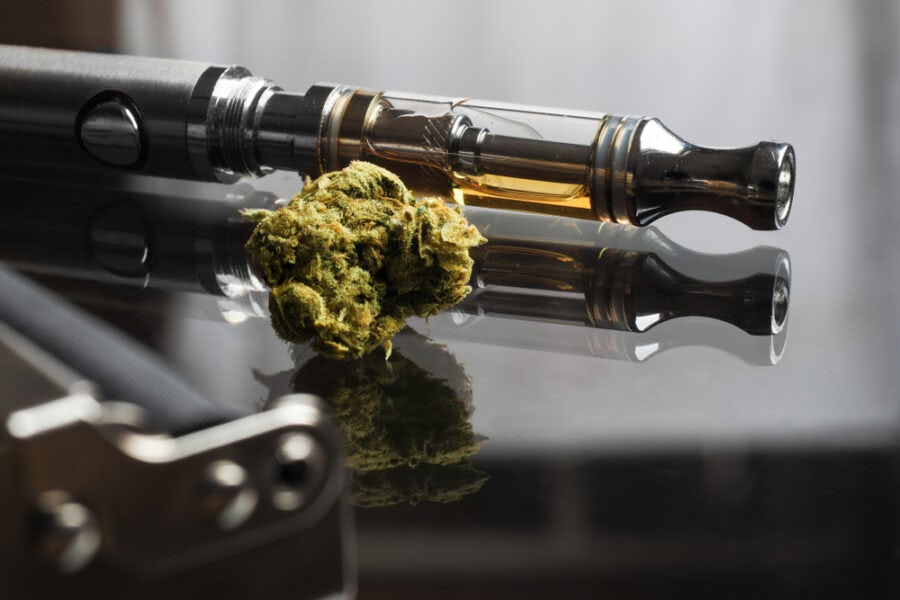When sex educator and author Ashley Manta needed relief from pain during penetration, she called a friend, who had experience making DIY cannabis topicals. Manta quickly became a fan of her friend’s two-ingredient cannabis oil recipe with its endless uses, including as a sexual lubricant.
“It made a huge difference with my pleasure and comfort,” recalls Manta. “And it was simple, from the ingredients to the preparation time.”
Both science and decades of anecdotal evidence state that cannabis and sex complement each other and cannabinaoids stimulate our Endocannabinoid System (ECS), which contributes to the regulation of sexual function.
Cannabis-based lube is no different.
According to Laurel (Lo) Friesen, founder and chief extractor of Heylo, many people prefer cannabis-infused lube to amplify pleasure and arousal during sex. “Cannabis lube also provides relief to people who experience pain during sex. It increases blood flow through the presence of THC and increases sensation during sex,” says Friesen, who has a degree in environmental chemistry. “Both THC and CBD lube moisturize, act as anti-inflammatory agents, muscle relaxers and increase pleasure.”
Friesen goes on to mention that the genitals have thin membranes, so it’s possible that THC can enter the bloodstream when used in this way. “So, CBD is a safer option for anyone avoiding THC.” In that same vein, and unlike typical topicals applied to the skin, be aware that using a THC-containing lube could result in a positive Drug Screen.
Also be aware that condoms, contraceptive diaphragms, dental dams, latex gloves, and indeed all latex products can spring holes and be degraded by oil based lubricants, including those based on the recipes below. (Water-based and silicone-based lubricants do not degrade latex products.)
THC lube recipe
Yields: approximately 6mg of THC per 1mL of oil
Manta’s two-ingredient lube includes THC and she notes that to ensure optimal effect, keep dosage in mind when making and using the lube. Don’t overdo it.
One particularly undesirable side effect of too much THC is erectile dysfunction (ED) but on a lighter note, too much will more likely make you sleepy…and put you right out of the mood. 1
Ingredients
- 8oz fractionated (liquid) coconut oil or MCT oil
- ¼ oz of high quality flower (third-party tested and free of pesticides, molds, etc.)
Supplies
- two 4oz mason jars
- food scale
- grinder or food processor
- slow cooker with a warm setting
- unbleached cheesecloth
- large funnel
- smaller funnel
- tincture bottle with a 1 mL calibrated pipette
- boiling water (enough to cover the mason jars in the slow cooker)
Note: This recipe’s potency is based on cannabis that is approximately 10-15% THC. Potency can vary significantly based on the THC content of the buds you choose.
Directions
- Gather supplies.
- Grind up cannabis using a food processor (preferable) or a grinder.
- Activate (decarboxylate) your THC with this standard method: spread the ground cannabis evenly on a cookie sheet and bake in a preheated oven at 220-245 degrees Fahrenheit (105-120 Celsius) for one hour on the middle rack. Stir the herb after 30 minutes.
- Once the cannabis is decarboxylated, divide evenly into each 4oz mason jar.
- In even proportions, add the oil to each jar over top of the ground flower.
- Close jars — Make sure the lid of the mason jar is as tight as possible.
- Place mason jars in the slow cooker and fill with water so that the jars are fully submerged.
- Set a slow cooker to “warm” setting for four to five hours.
- Every 60 minutes, using a jar clamp or heavy oven mitts, pull out the jars and give them a good shake. Be careful not to burn yourself as the glass and metal will both be hot!
- After 4-5 hours, remove jars from water and place them on a cloth until they’re cool (don’t put it on a cold/hard surface as the glass could crack).
- Line a funnel with 4 layers of cheesecloth and place over a large glass measuring cup with a pour spout.
- Slowly pour the cooled liquid through the cheesecloth. Use the cheesecloth to squeeze out the plant matter that remains. Your strained oil will be slightly green.
- Using a smaller funnel, pour the oil into a tincture bottle with a 1 mL graduated pipette.
CBD lube recipe
William Johnson, the formulation chemist at Bardo Labs, a boutique extraction and manufacturing lab in upstate New York, has created a CBD lubricant formulation with a mix of other natural ingredients that have moisturizing, protective and nourishing properties.
For example, the castor oil aids in thickening the product but also has soothing properties and pomegranate seed oil has a specific fatty acid called punicic acid that acts as a free radical scavenger and supports tissue healing and repair. 2
“In this recipe,” says Johnson, “all you need to do is heat the combination of ingredients at 70 degrees Celsius (158 degrees F), mixing until homogeneous. Then, take off the heat and pour it into your packaging of choice.
However, an advanced user may want a different percentage of CBD in the finished product so they may need to adjust all other ingredients accordingly. CBD-only products require much higher doses to be as effective as THC + CBD or THC products.”
| Common name | INCI | Concentration % |
|---|---|---|
| Sunflower Seed Oil | Helianthus Annuus Seed Oil | 61 |
| Castor Seed Oil | Ricinus Communis Seed Oil | 15 |
| Coconut Oil | Cocos Nucifera Oil | 10 |
| Shea Butter | Butyrospermum Parkii | 5 |
| Sweet Almond | Prunus Amygdalus Dulcis Oil | 5 |
| Vitamin E, Mixed Tocopherols | Tocopherol | 1.5 |
| CBD | Cannabidiol | 1.5 |
| Pomegranate Seed Oil | Punica Granatum Seed Oil | 1 |
Packaging and storage
“The problem with products packaged in jars,” says Johnson, “is that people tend to stick their fingers into the pot and the microbes from the fingers (even after washing) contaminate the product.” The solution? Use a small spatula instead of a finger. Another issue with jar packaging is that it is easier for oxidation (or rancidity). “The jar encourages faster oxidation because it exposes the formula to air and light with every use.” Knowing this, keep in mind that active ingredients might lose their potency when continuously exposed to air. Also remember, a significant benefit from DIY lube and using a jar is that the packaging is recyclable. Protect from heat and light. If stored in the fridge, warm to room temperature before use.
Importance of decarboxylation
It’s quite simple: decarboxylation by heating activates cannabinoids (i.e., THC-A becomes delta 9 THC). This process is essential to introduce the most active cannabis compounds into topicals like lubrication, says Johnson, “because THC is a powerhouse vasodilator, and allows more oxygenated blood to flow to the area on which it’s applied, and enhances sensation and helps relax the muscles and tissue.”
Friesen agrees and adds: “This conversion is also necessary to feel the intoxicating effects of cannabis and without this conversion, raw cannabis doesn’t result in intoxication.” However, the process can also be quite complicated as each cannabinoid and terpene has a different decarboxylation temperature and vulnerability of being destroyed when exposed to high heat.
So, if you’re adding ingredients, do your research.
Weed lube: tips and tricks
- Nosy neighbors? Cook bacon or something fragrant at the same time you decarb to mask the scent.
- Bits of weed floating in your oil? Strain it. You do not want bits of weed on your private parts!
- Place topicals in dedicated containers and not ones that are commonly used for other foods or drinks to avoid any mix ups.
- Keep out of reach of children. Store homemade lube in a locked drawer or cabinet, out of sight/reach. Use safety latches on cabinets.
- Go natural. It’s best practice to avoid too many synthetic additives and potential irritants like fragrances.
Common mistakes and how to avoid them
- Using a non plant-based oil like Vaseline (petroleum jelly) or mineral oil. These types of oils, as well as the plant based oils in the recipes in this article, can interact with latex barriers (condoms/contraceptive diaphragms, dental dams/gloves). All oils can degrade the latex barrier, and may cause it to fail. Not a good way to prevent an unwanted pregnancy and defeats the purpose of wearing a condom! Stick to polyurethane or nitrile barriers if you’re using any oil-based lube. Water and silicone-based lubricants do not degrade latex products. 3
- Keeping the oil for too long. The plant matter, as well as the choice of oil itself will make it less shelf stable, so pitch your batch every six months or so before it goes rancid. Using MCT or other oil that is past its expiration date runs the risk of it being rancid or turning rancid before you finish using the batch. So use fresh oil that has been kept cool and out of direct sunlight.
- Using the wrong type of CBD. The type of CBD is important to maximize efficacy. Full-spectrum extracts have more effects. CBD isolates will have less of an effect or require higher doses. Similarly, hemp seed oil without any cannabinoids will have no cannabis-like effect but can still be a lubricant.
Sources
- Pizzol, D., Demurtas, J., Stubbs, B., Soysal, P., Mason, C., Isik, A. T., Solmi, M., Smith, L., & Veronese, N. (2019). Relationship Between Cannabis Use and Erectile Dysfunction: A Systematic Review and Meta-Analysis. American journal of men’s health, 13(6), 1557988319892464. https://doi.org/10.1177/1557988319892464
- Wu DC, Goldman MP. A Topical Anti-inflammatory Healing Regimen Utilizing Conjugated Linolenic Acid for Use Post-ablative Laser Resurfacing of the Face: A Randomized, Controlled Trial. J Clin Aesthet Dermatol. 2017;10(10):12-17.
- Hernández-Romieu AC, Siegler AJ, Sullivan PS, Crosby R, Rosenberg ES. How often do condoms fail? A cross-sectional study exploring incomplete use of condoms, condom failures and other condom problems among black and white MSM in southern U.S.A. Sex Transm Infect. 2014;90(8):602-607. doi:10.1136/sextrans-2014-051581
Sign up for bi-weekly updates, packed full of cannabis education, recipes, and tips. Your inbox will love it.

 Shop
Shop Support
Support
















